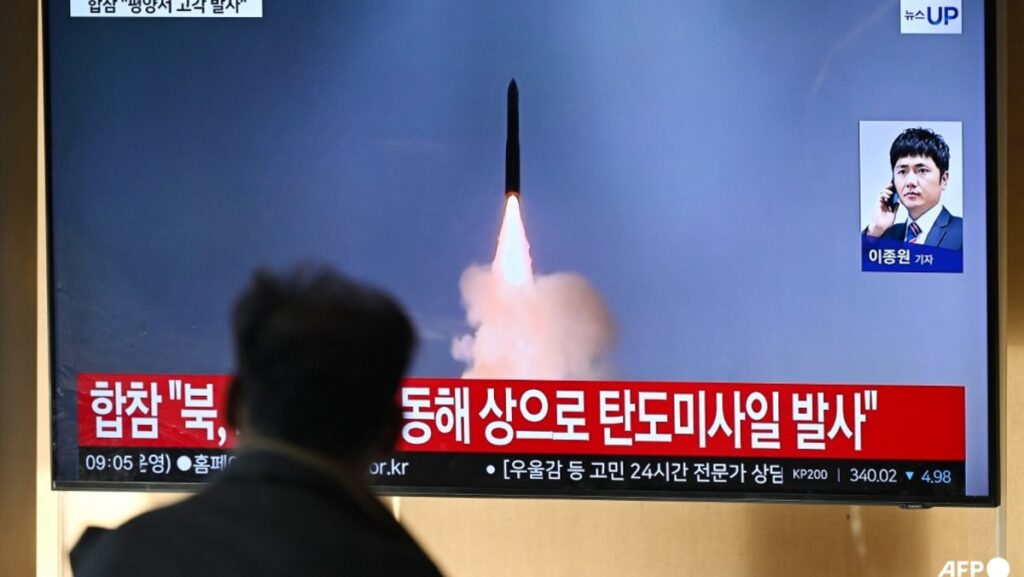PYONGYANG-MOSCOW TIES
On Friday, South Korea imposed new sanctions on 11 North Korean individuals and four entities over the ICBM test, naming officials for contributing to missile and nuclear development and channelling illegal foreign funds back to the country.
A spokesperson for South Korea’s unification ministry, which handles relations with the North, said the launch could have been for several purposes, including demonstrating military technology, pressuring Washington and diverting attention from the issue of sending North Korean troops to Russia.
Ukraine’s President Volodymyr Zelenskyy blasted what he called his allies’ “zero” response to Russia’s deployment of North Korean troops for the war in Ukraine, which has also sparked worries that Moscow could provide sensitive military technology to Pyongyang in return.
Russia and North Korea have not denied the troop deployments and have defended their right to help each other.
US Defense Secretary Lloyd Austin said the Pentagon was very early in its assessment phase of the missile launch “and we don’t see any indication at this point that there was Russian involvement”.
KCNA said the launch did not affect the safety of neighbouring countries and was an appropriate military step in the face of threats from North Korea’s enemies.
Although Russia may provide some specialists to assist with inspections or modifications, Kim Dong-yup of the University of North Korean Studies in Seoul expressed scepticism it would share sensitive technology with Pyongyang.
“Even if some level of military cooperation between North Korea and Russia is possible, they are likely to be very cautious when it comes to core military technologies.”
HEAVIER PAYLOADS
The Hwasong-19 will deploy alongside the Hwasong-18, which was first launched last year and is also powered by solid fuel, KCNA said.
Solid-fuel missiles do not need to be fuelled immediately ahead of launch, are often easier and safer to operate, and require less logistical support, making them harder to detect than liquid-fuel weapons.
“It can be stored and moved anywhere, allowing for excellent mobility, stealth and survivability,” said Kim of the University of North Korean Studies.
Photos released by KCNA showed a large, multi-stage missile launched from a canister carried by a transporter-erector-launcher (TEL) vehicle.
KCNA also showed photos from cameras that appeared to be attached to the missile, taking images of stage separations and the earth.
“The increased length likely means a greater fuel capacity, which directly affects thrust and potentially increases range,” Kim said.
But North Korea’s existing missiles already had the range to reach anywhere in the US, and the Hwasong-19’s expanded capacity combined with larger payload section is more likely designed to be able to carry heavier, and potentially multiple, nuclear warheads, he said.
“North Korea may continue testing to see if, during the final reentry phase, the warheads can separate and each head toward individual targets,” Kim added.
The Hwasong-19 flew 1,001.2km for 85 minutes and 56 seconds before landing in the sea off the east coast of the Korean peninsula with a maximum altitude of 7,687.5km, KCNA said.
Read the full article here

